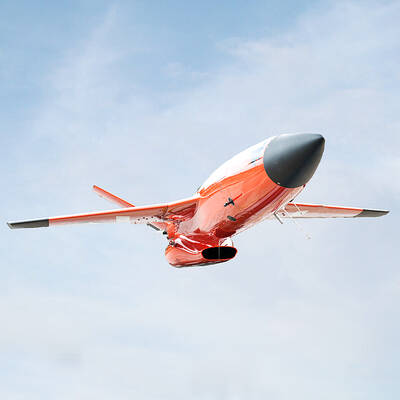A US destroyer and a Canadian frigate on Tuesday sailed through the Taiwan Strait in the latest joint operation aimed at reinforcing the route’s status as an international waterway.
Beijing views as its own the narrow body of water separating Taiwan from China — one of the world’s busiest shipping channels.
The US has long used “freedom of navigation” passages through the Strait to push back against Chinese claims and Western allies have increasingly joined these operations.

Photo: AP
The USS Higgins, an Arleigh Burke-class destroyer, in cooperation with the Royal Canadian Navy’s Halifax-class frigate the HMCS Vancouver “conducted a routine Taiwan Strait transit” on Tuesday “in accordance with international law,” the US Navy’s Seventh Fleet said.
“The ship transited through a corridor in the Strait that is beyond the territorial sea of any coastal state,” it said.
Canada said the Vancouver was en route to join an ongoing mission to enforce UN sanctions against North Korea when it transited with the Higgins.
“Today’s routine Taiwan Strait transit demonstrates our commitment to a free, open and inclusive Indo-Pacific,” Canadian Minister of National Defence Anita Anand said in a statement, using another term for the Asia-Pacific region.
In Taipei, the Ministry of National Defense confirmed the transit, saying in a statement that the military monitored the ships as they sailed north through the Strait, and did not see any irregularities.
Ministry of Foreign Affairs spokeswoman Joanne Ou (歐江安) yesterday said that her ministry welcomed and affirmed the stance of the Canadian and US governments regarding the legal status of the Strait as international waters, and the need to safeguard freedom of navigation, as well as regional peace and stability.
The passage also demonstrates democratic countries’ firm opposition to China’s attempts at expansionism, Ou said.
“The Taiwanese government will continue to strengthen its self-defense capabilities, resolutely resist authoritarian expansion and aggression, and deepen the close Taiwan-US security partnership,” she said. “We will strengthen cooperation with all like-minded countries to jointly safeguard the security of the Taiwan Strait and the rules-based international order.”
A spokesman for the Chinese People’s Liberation Army’s Eastern Theater Command called the transit “public hype.”
“The troops are always on high alert, resolutely counteract all threats and provocations, and resolutely defend national sovereignty and territorial integrity,” state broadcaster China Central Television quoted Colonel Shi Yi (施毅) as saying.
Australian, British, Canadian and French warships have sailed through the Strait in the past few years, sparking protests from Beijing.
The latest joint passage came a day after US President Joe Biden again declared that US troops would come to Taiwan’s aid in the event of a Chinese invasion.
It was the fourth time Biden made such comments, despite Washington’s longstanding official policy of “strategic ambiguity” — designed to ward off a Chinese invasion and discourage Taiwan from provoking Beijing by formally declaring independence.
Each time after Biden’s comments, the White House said there was no change in US policy on Taiwan.
Additional reporting by CNA

‘WIN-WIN’: The Philippines, and central and eastern European countries are important potential drone cooperation partners, Minister of Foreign Affairs Lin Chia-lung said Minister of Foreign Affairs Lin Chia-lung (林佳龍) in an interview published yesterday confirmed that there are joint ventures between Taiwan and Poland in the drone industry. Lin made the remark in an exclusive interview with the Chinese-language Liberty Times (the Taipei Times’ sister paper). The government-backed Taiwan Excellence Drone International Business Opportunities Alliance and the Polish Chamber of Unmanned Systems on Wednesday last week signed a memorandum of understanding in Poland to develop a “non-China” supply chain for drones and work together on key technologies. Asked if Taiwan prioritized Poland among central and eastern European countries in drone collaboration, Lin

The Chien Feng IV (勁蜂, Mighty Hornet) loitering munition is on track to enter flight tests next month in connection with potential adoption by Taiwanese and US armed forces, a government source said yesterday. The kamikaze drone, which boasts a range of 1,000km, debuted at the Taipei Aerospace and Defense Technology Exhibition in September, the official said on condition of anonymity. The Chungshan Institute of Science and Technology and US-based Kratos Defense jointly developed the platform by leveraging the engine and airframe of the latter’s MQM-178 Firejet target drone, they said. The uncrewed aerial vehicle is designed to utilize an artificial intelligence computer

The US government has signed defense cooperation agreements with Japan and the Philippines to boost the deterrence capabilities of countries in the first island chain, a report by the National Security Bureau (NSB) showed. The main countries on the first island chain include the two nations and Taiwan. The bureau is to present the report at a meeting of the legislature’s Foreign Affairs and National Defense Committee tomorrow. The US military has deployed Typhon missile systems to Japan’s Yamaguchi Prefecture and Zambales province in the Philippines during their joint military exercises. It has also installed NMESIS anti-ship systems in Japan’s Okinawa

Renewed border fighting between Thailand and Cambodia showed no signs of abating yesterday, leaving hundreds of thousands of displaced people in both countries living in strained conditions as more flooded into temporary shelters. Reporters on the Thai side of the border heard sounds of outgoing, indirect fire yesterday. About 400,000 people have been evacuated from affected areas in Thailand and about 700 schools closed while fighting was ongoing in four border provinces, said Thai Rear Admiral Surasant Kongsiri, a spokesman for the military. Cambodia evacuated more than 127,000 villagers and closed hundreds of schools, the Thai Ministry of Defense said. Thailand’s military announced that